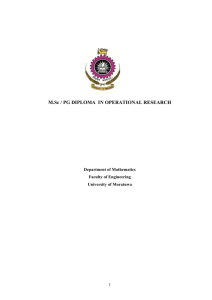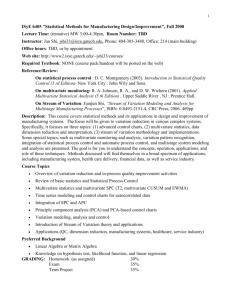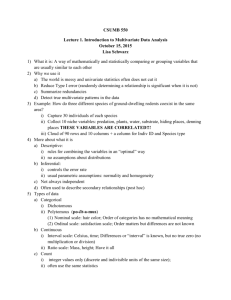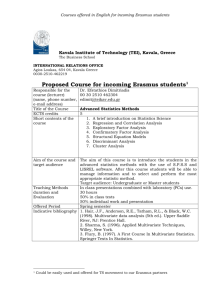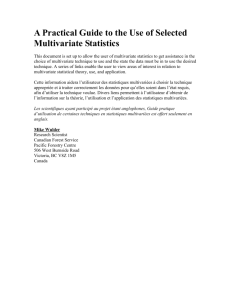GRM 5110 Statistical Application in Geography
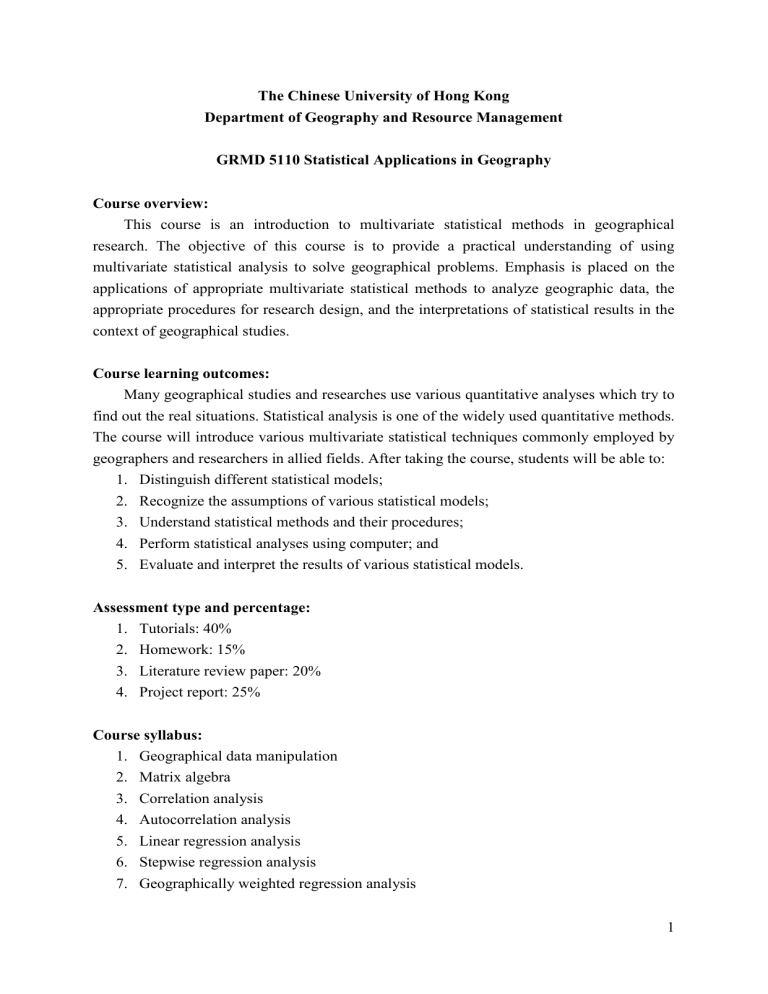
The Chinese University of Hong Kong
Department of Geography and Resource Management
GRMD 5110 Statistical Applications in Geography
Course overview:
This course is an introduction to multivariate statistical methods in geographical research. The objective of this course is to provide a practical understanding of using multivariate statistical analysis to solve geographical problems. Emphasis is placed on the applications of appropriate multivariate statistical methods to analyze geographic data, the appropriate procedures for research design, and the interpretations of statistical results in the context of geographical studies.
Course learning outcomes:
Many geographical studies and researches use various quantitative analyses which try to find out the real situations. Statistical analysis is one of the widely used quantitative methods.
The course will introduce various multivariate statistical techniques commonly employed by geographers and researchers in allied fields. After taking the course, students will be able to:
1.
Distinguish different statistical models;
2.
Recognize the assumptions of various statistical models;
3.
Understand statistical methods and their procedures;
4.
Perform statistical analyses using computer; and
5.
Evaluate and interpret the results of various statistical models.
Assessment type and percentage:
1.
Tutorials: 40%
2.
Homework: 15%
3.
Literature review paper: 20%
4.
Project report: 25%
Course syllabus:
1.
Geographical data manipulation
2.
Matrix algebra
3.
Correlation analysis
4.
Autocorrelation analysis
5.
Linear regression analysis
6.
Stepwise regression analysis
7.
Geographically weighted regression analysis
1
8.
Logistic regression analysis
9.
Principal component analysis
10.
Factor analysis
11.
Canonical correlation analysis
12.
Cluster analysis
13.
Discriminant analysis
Teaching and Learning activities:
The teaching and learning activities of the course will consist of double-lesson lectures per week, five tutorials, and students’ presentation.
SPSS (Statistical Package for Social Science) and S-plus are powerful and easy to use software packages of statistical analysis for Geographers and Social Scientists. Five sets of laboratory practices have been arranged to help students gain experience of using the SPSS and S-plus softwares and to conduct basic calculations of statistical methods. Students are encouraged to do more practices and complete assigned homework with SPSS and S-plus if possible. The focuses of five tutorials are as follows:
1.
Statistical procedure for data analysis
2.
Correlation analysis and autocorrelation analysis
3.
Linear, stepwise and logistic regression analyses
4.
Principal component analysis and factor analysis
5.
Clustering analysis and discriminant analysis
Feedback for evaluation:
The suggestions and information from the early course evaluation
Students’ reaction during the lectures
Students’ feedback and suggestion from WebCT forum
Informal interaction with students and tutors
Student performance in the class and examination
Previous course evaluation results
Required readings:
•
Marcoulides George A. and Scott L. Hershberger (1997), Chapter 2 Basic Matrix
Algebra, Multivariate Statistical Methods: A First Course, Mahwah: Lawrence
Erlbaum Associates, 9-22
•
Griffith Daniel A. (2003), Spatial Autocorrelation and spatial Filtering: Gaining
Understanding Through Theory and Scientific Visualization, Germany : Springer
•
Hsieh Chun-Ying, Chou Kuo-Ping (2002), A spatial autocorrelation analysis of aging distribution and transition, Journal of Population Studies , Vol 25, pp, 91-119
2
•
Kachigan Sam Kash (1991) Chapter 4 Regression analysis, Multivariate Statistical
Analysis: A Conceptual Introduction, New York: Radius Press, 160-193
•
Huang Y, Y Leung and J Shen (2007), Cities and Globalization: An International Cities
Perspective, Urban Geography , Vol. 28, No.3, 209-231.
•
Loo, Beckyp. Y. (2000), an application of canonical correlation analysis in regional science: the interrelationships between transport and development in China’s Zhujiang
Delta, Journal of Regional Science , Vol 40, No. 1,
•
Marcoulides George A. and Scott L. Hershberger (1997), Chapter 6 Canonical
Correlation, Multivariate Statistical Methods: A First Course, Mahwah: Lawrence
Erlbaum Associates, 133-161
•
Epperson Bryank, Li Tianquan (1996), Measurement of genetic structure within populations using Moren’s spatial autocorrelation statistics,
Population Biology , Vol
93, pp. 10528-10532.
•
Anderson T.W. (2003), An Introduction to Multivariate Statistical Analysis, Third
Edition, USA: Wiley Interscience
•
Wong David W.S. and Jay Lee (2005), Statistical Analysis of Geographic Information with ArcView GIS, New Jersey: John Wiley & Sons, Inc.
Recommended readings:
•
Goodchild Michael F. (1986), Spatial Autocorrelation, Norwich: Geo Books, Catmog
47
•
Johnson, Richard A. & Dean W. Wichern (2002), Applied Multivariate Statistical
Analysis , Prentice-Hall, 5 th
edition
•
Johnston R.J. (1980), Multivariate Statistical Analysis in Geography , London:
Longman Group Limited
•
Kachigan Sam Kash (1991), Multivariate Statistical Analysis: A Conceptual
Introduction, New York: Radius Press
•
Marcoulides George A. and Scott L. Hershberger (1997), Multivariate Statistical
Methods: A First Course, Mahwah: Lawrence Erlbaum Associates
3
